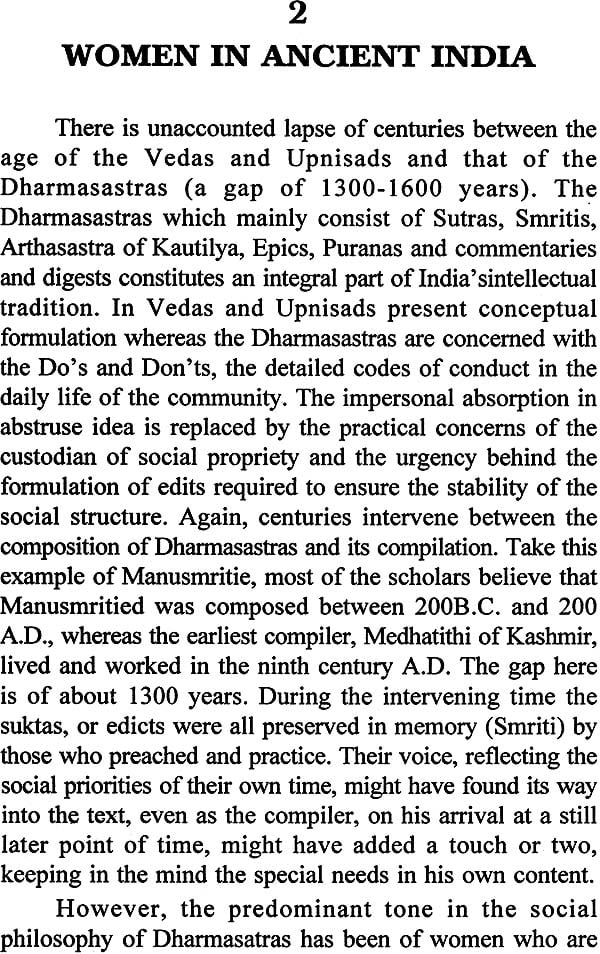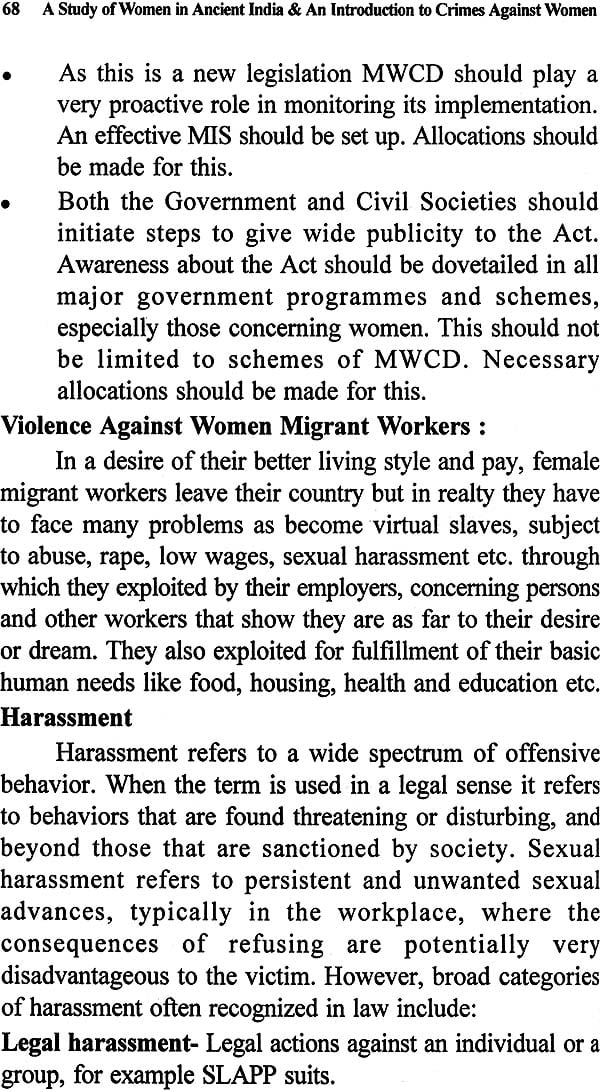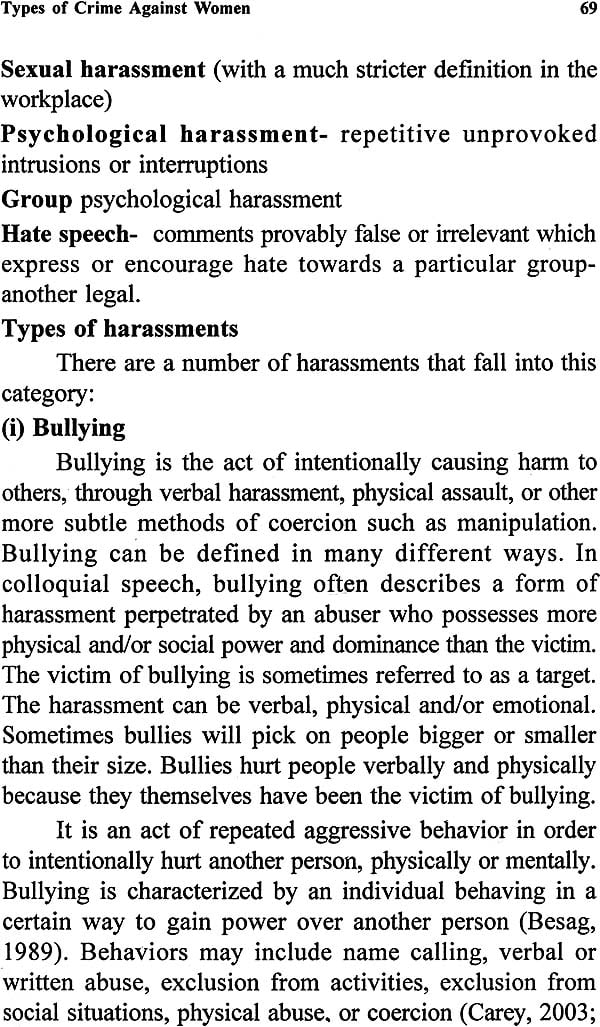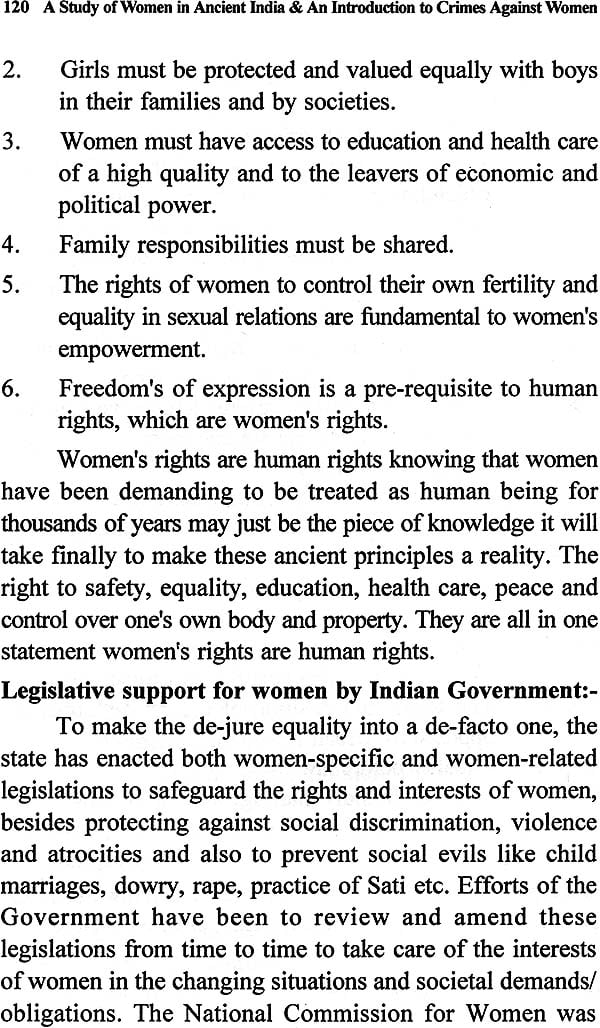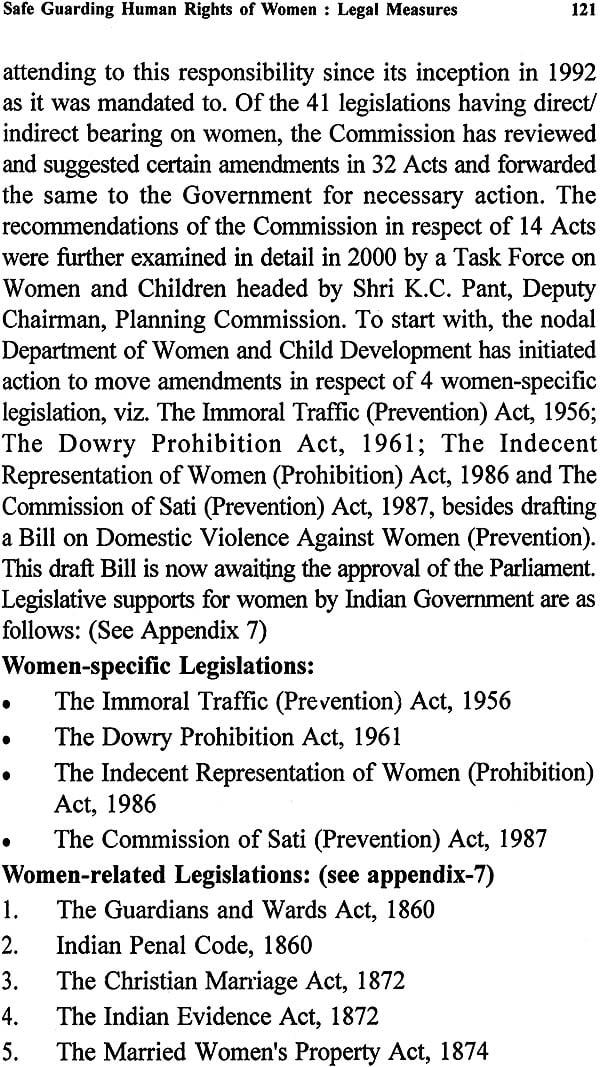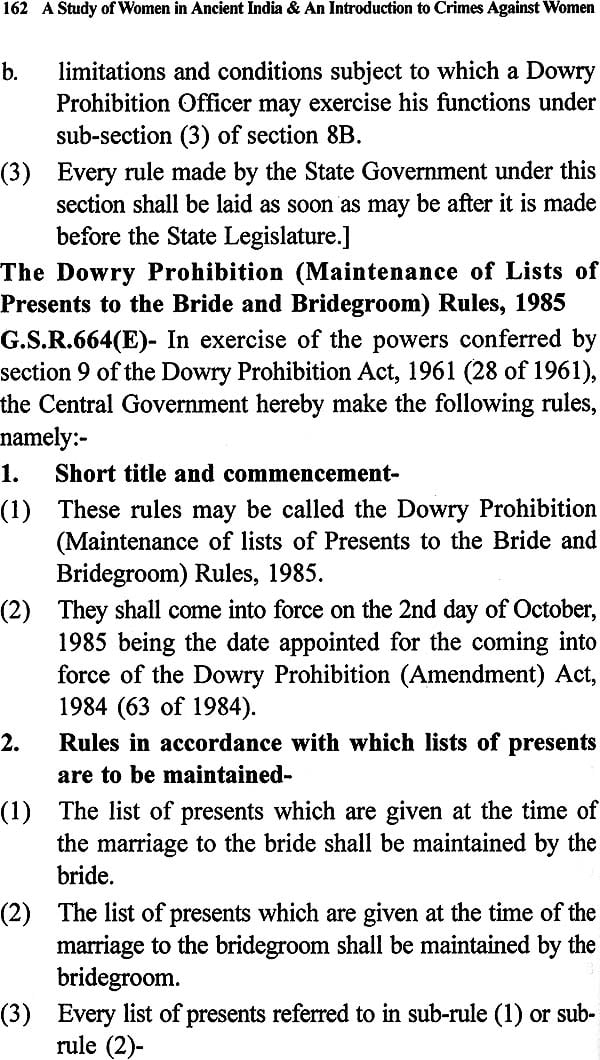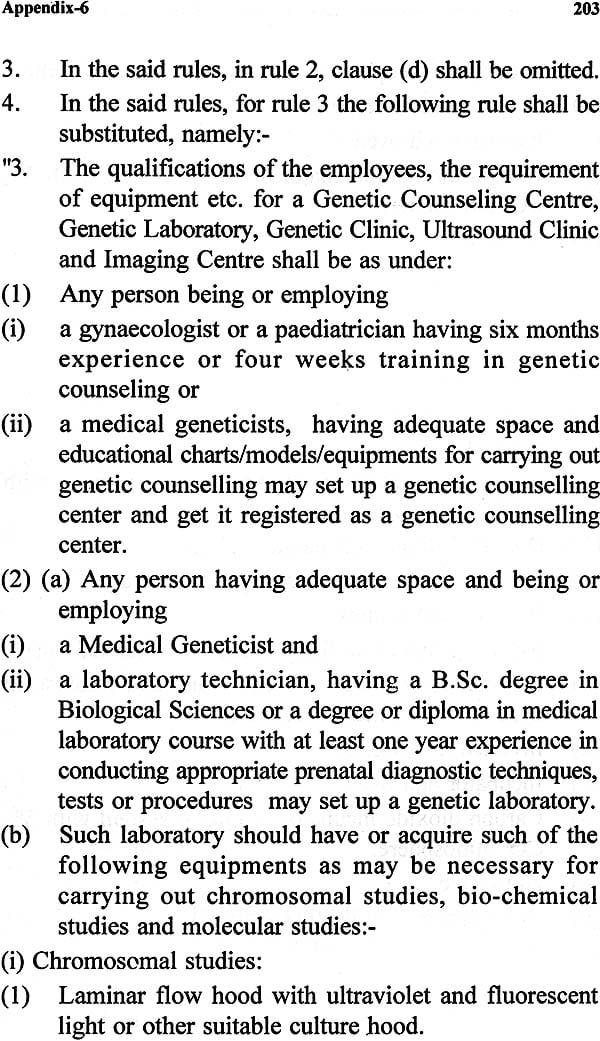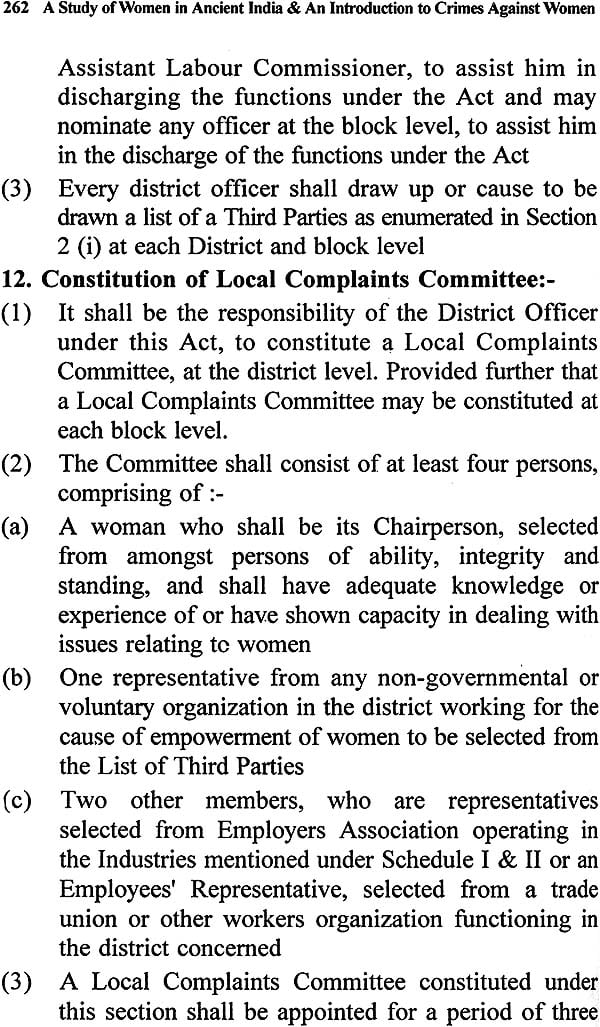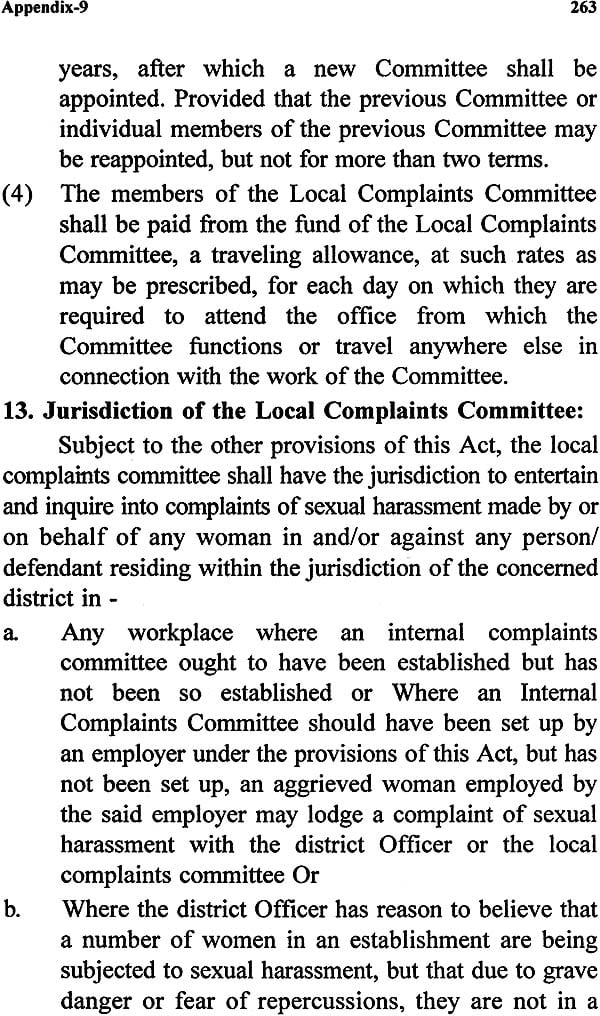
A Study of Women in Ancient India and Introduction to Crimes Against Women
Book Specification
| Item Code: | NAH126 |
| Author: | Shrinitya Malviya |
| Publisher: | Sampurnanand Sanskrit University |
| Language: | English |
| Edition: | 2008 |
| ISBN: | 8172702264 |
| Pages: | 356 |
| Cover: | Hardcover |
| Other Details | 8.5 inch x 5.5 inch |
| Weight | 480 gm |
Book Description
On one side we see a glorious history of Indian women while on the other side since past centuries there is decline in the economical, political, educational and social status of women. In fact there is an increase in crimes against them.
This book gives a holistic view over ancient pride of Indian women, their glory vis-it-vis their present miserable state, the various ways of crimes committed against them. This book also explains how they can be defensive against these crimes with the help of numerous constitutional support and schemes available - in the favour of them.
Various facts related to women have been compiled together and presented in the form of appendices in this book. I hope this book will be of immense use to the people of educational as well as non educational organizations.
She is also a proficient social thinker. She conducted many programmes for the development of education in rural areas. Her more than twenty five articles and research papers have been published in reputed magazine and journals of national and international. She has delivered speeches and presented papers in various national and international conferences.
Vedic cults and literature is renowned for its uniqueness. This book presents the social aspect of that uniqueness of Vedic literature which elaborates on the characteristics of women of Vedic and Post-Vedic era. Writer has thoughtfully depicted the present condition of nasty human mind involved in nibbling the ancient pride and honour of women. And I appreciate her for this stride.
In fact, the materialistic outlooks of people have distracted them from their moral obligation leading society to a critical state. Miss Shrinitya Malviya has successfully brought this problem before society a challenge through this book "A Study of Women in Ancient India and An Introduction to Crimes against Women". I give my best wishes for her commendable effort that her thoughts can reach deep into society for its benefit.
I express my thanks to Dr. Harishchandra Mani Tripathi who is always receptive to quality works and publishing this benevolent book. I also extend my blessing to e , colleagues Dr. Harivansh Kumar Pandey, Dr. Dadan Upadhyay and Sri Kanhayi Singh Kushwaha for their support in this noble cause.
It is 'observed that the status of women in different cultures were varied. The advancement of the society from ancient period to modern era occurred and the status of women found changing time to time. It is difficult to indicate the status of women in any particular period or society. We can emphasize the status of the women in the present modern society. Since the independence the status of women is gaining heights in progressive manner. The women are raising their status in education, profession, health, politics and administrative services. It is well proven toway that women on no grounds lack in capacity as compared to men in any way or the other. They proofed themselves capable of any responsibility, job or work. But despite having so much of potential women are still suppressed and violence against them are increasing women are facing psycho-social, economic and adjustment problem due to patriarchal nature of our society. This is the result of the feeling of superiority among the men and certain extra ordinary responsibilities of the family towards the women.
In sum, the Indian tradition is replete with evidences which show intermittent violence and crimes against women on one pretext or the other that she is lazy, frivolous, lustful, vain, touchy, unpredictable, unreliable and inferior. In our society which is tradition bound and male dominated, woman is still a second class citizen. She is confined to domestic servitude, her movements are restricted, and she is given no freedom to choose her career or husband, she merges her identity with that of her husband and consequently perceives herself as a subordinate person. The imposition of restrictions starts in the family of orientation where she is born. As a result she has to adjust in the family of procreation. The social conditioning determines different perspective for men and women and they view different worlds as well. It shows that women have been discriminated in all spheres of life in all societies with varied magnitude and dimensions all through the ages: various types of crimes and atrocities are inflicted on them. Rape, Wife Beating, Cruelty, Foeticide, Infanticide, Abuse of Elderly Women, Early age Marriage, Eve-teasing, Sexual and Physical Harassment, Murder for Dowry, Economic Exploitation etc. are some of worth crimes, and modem women frequently faces. Though a number of corrective legislations are in operation, crime against women cannot be curbed. Everyday we come across such news stories.
The present book has been inspired by every day newspapers' reporting which carry out news of some incidents where a married woman has been murdered by her husband or in-laws because her parents could not satisfy their lust for dowry, or where a married woman has been forced to commit suicide because of the act of cruelty and violence perpetrated against her, and by the reporting of more minor sexual offences, indecent assault or indecency with children and by the cases of incest where a girl child is sexually assaulted by her own close blood relatives within prohibited degrees of relationship.
An attempt is made here to highlight all the probable types of crime that could be inflicted on a women, identification of the potential victims as well as the potential culprits and the various factors that could lead to violence against women. It also traces the sources from where such violence could emanate and preventive steps that could be taken.
It is hoped that this book will contribute in the effort to engage' in a dialogue on the question of crimes against women. The book will be very useful to general readers, sociologist, students, academicians, researchers, planners, NGOs, civil societies and all those who are interested in women studies. They will be able to add valuable insights to their own perceptions of the subject.
I extend my Pranaam to my reverent parent prof. Ramji Malviya-Dr. Gayatri Dwivedi and gratitude - other family members for their cooperation without to conduct this study was not possible.
I am extremely thankful to Prof. A.S. loam Shastri, Professor and Head of Department of Social Work, Mahatma Gandhi Kashi Vidyapeeth, Varanasi who with his excellent supervision, valuable guidance, constant encouragement, constructive criticism and helpful attitude was also responsible for the successful completion of this work.
I am highly grateful to the library staff of Saraswati Bhawan, Sampurnanand Sanskrit University, Varanasi and Centre for Women's Development Studies, Banaras Hindu University, Varanasi for their cooperation and support in accessing rich material for this study.
I would like to remain thankful to Dr. Harish Chandra Mani Tripathi, Director, Research and Publication Institute of Sampurnanand Sanskrit University. Definitely, this effort could not take shape without the support of him.
Lastly, I am thankful to Mr. Mustak Ahmad for better documentation and valuable technical assistance.
| Preface | i-iv | |
| Chapter-1 | Introduction | 1-5 |
| Chapter-2 | Women in Ancient India | 6-26 |
| Chapter-3 | Crimes Against Women | 27-45 |
| Chapter-4 | Types of Crime Against Women | 46-116 |
| Chapter-5 | Safe Guarding Human Rights Women : Legal Measures | 117-129 |
| Chapter-6 | Conclusion and Suggestions | 130-144 |
| Appendix | 145-331 | |
| List of Abbreviations | 332-333 | |
| Bibliography | 334-340 |
